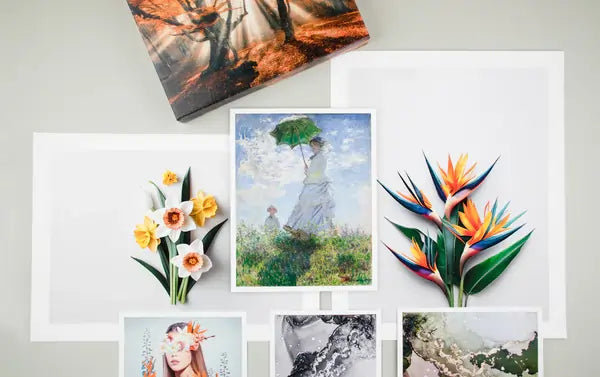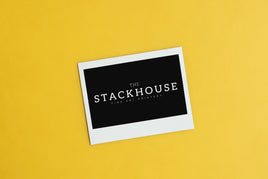TL;DR: The right border size enhances your print’s appearance and protects it during handling, framing, and signing. Learn how to calculate balanced border proportions and avoid common mistakes when ordering your art or photo prints.
Why Border Size Matters
Borders are more than decorative space — they affect the balance, presentation, and usability of your print. The right proportions create a polished, professional look that complements your artwork without crowding it. At The Stackhouse, we help artists and photographers find border dimensions that fit their goals for display, matting, and resale.
How To Select the Ideal Border Size
As a general guideline, your artwork should occupy around 80 percent of the total printed area, with the remaining 20 percent used for borders. This ratio keeps the artwork centered and visually balanced while leaving space for matting, signatures, or captions.
Here’s a quick breakdown of traditional border proportions for rectangular prints:
- Sides: 10% of the print width
- Top: 7% of the print height
- Bottom: 13% of the print height (extra space for signing or titling)
For example, an 18×24-inch print would have side borders of roughly 1.8 inches, a top border of 1.7 inches, and a bottom border of about 3 inches.
Need help visualizing these ratios? Review our post on when to add borders to your art prints for real-world examples.
Consider Your Print’s Sheet Size
The sheet size — or final cut size — includes your image plus the border area. Inkjet and giclée printers often work from rolled media, trimming each piece after printing. If you add borders, your total sheet size will be slightly larger than the stated print size.
For example, ordering a 24×36-inch image with a 1-inch border results in a total paper size of 26×38 inches. Always confirm these final dimensions before framing or ordering custom mats. This ensures your print fits correctly and maintains the proportions you expect.
For more guidance on size planning, see our article on file requirements and print sizes.
Be Cautious with Embedded Margins
Embedded margins differ from printed borders. They exist inside the image, rather than as white space around it. While embedded margins can look clean on-screen, adding both embedded and printed borders can distort your layout or reduce your artwork’s visible area. Use one or the other — not both — to preserve the intended proportions of your piece.
Finding the Perfect Balance
Choosing border sizes is both technical and artistic. The right border enhances contrast, draws the viewer’s eye to the image, and provides practical space for framing or signature placement. A consistent border strategy also gives your portfolio a unified, professional presentation.
Ready to print your next masterpiece? Work with The Stackhouse to create perfectly proportioned loose canvas prints and fine art reproductions. Our team ensures precision trimming and border alignment on every order — so your work looks flawless from print to frame.










